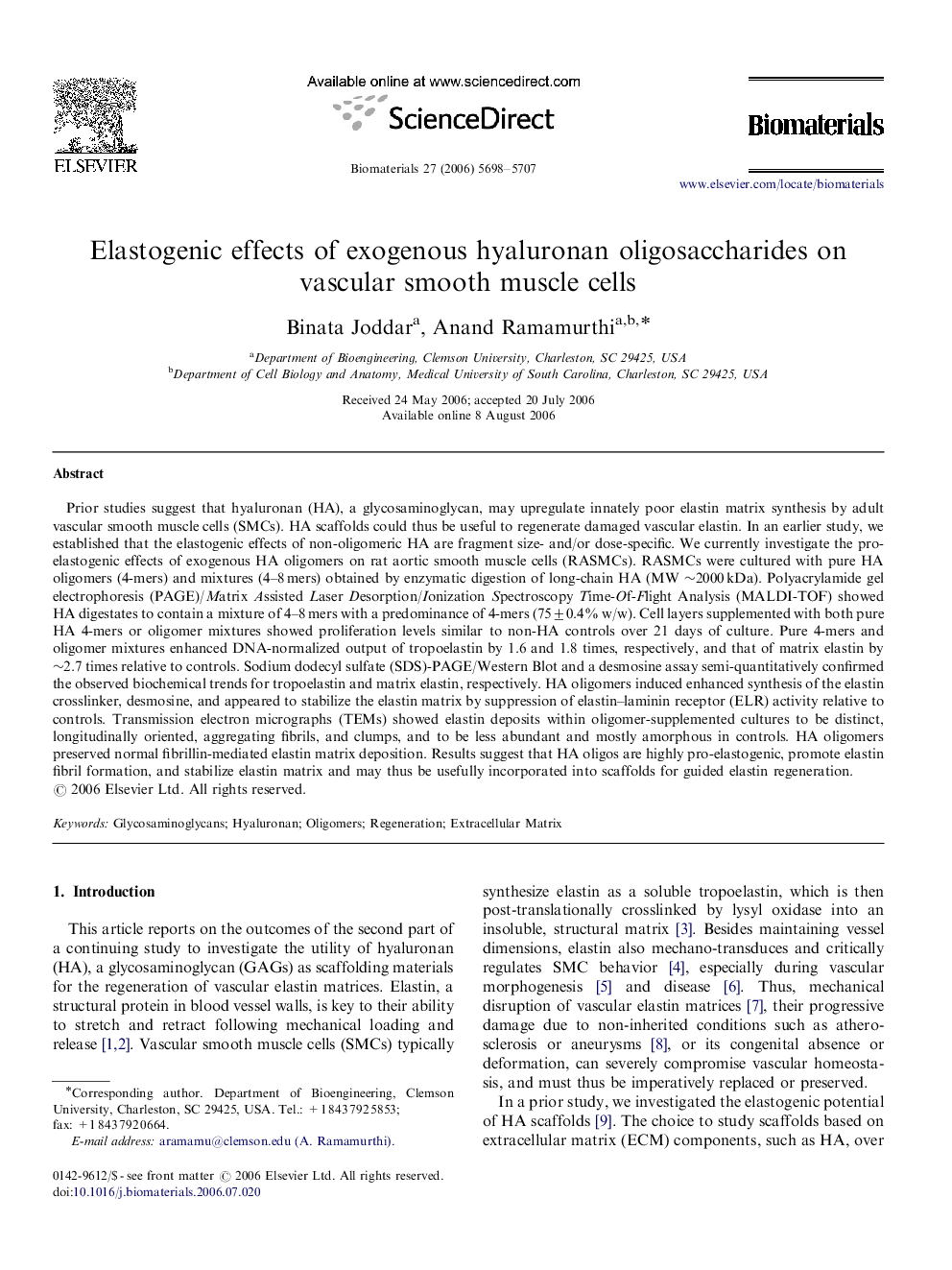| کد مقاله | کد نشریه | سال انتشار | مقاله انگلیسی | نسخه تمام متن |
|---|---|---|---|---|
| 11219 | 725 | 2006 | 10 صفحه PDF | دانلود رایگان |

Prior studies suggest that hyaluronan (HA), a glycosaminoglycan, may upregulate innately poor elastin matrix synthesis by adult vascular smooth muscle cells (SMCs). HA scaffolds could thus be useful to regenerate damaged vascular elastin. In an earlier study, we established that the elastogenic effects of non-oligomeric HA are fragment size- and/or dose-specific. We currently investigate the pro-elastogenic effects of exogenous HA oligomers on rat aortic smooth muscle cells (RASMCs). RASMCs were cultured with pure HA oligomers (4-mers) and mixtures (4–8 mers) obtained by enzymatic digestion of long-chain HA (MW ∼2000 kDa). Polyacrylamide gel electrophoresis (PAGE)/Matrix Assisted Laser Desorption/Ionization Spectroscopy Time-Of-Flight Analysis (MALDI-TOF) showed HA digestates to contain a mixture of 4–8 mers with a predominance of 4-mers (75±0.4% w/w). Cell layers supplemented with both pure HA 4-mers or oligomer mixtures showed proliferation levels similar to non-HA controls over 21 days of culture. Pure 4-mers and oligomer mixtures enhanced DNA-normalized output of tropoelastin by 1.6 and 1.8 times, respectively, and that of matrix elastin by ∼2.7 times relative to controls. Sodium dodecyl sulfate (SDS)-PAGE/Western Blot and a desmosine assay semi-quantitatively confirmed the observed biochemical trends for tropoelastin and matrix elastin, respectively. HA oligomers induced enhanced synthesis of the elastin crosslinker, desmosine, and appeared to stabilize the elastin matrix by suppression of elastin–laminin receptor (ELR) activity relative to controls. Transmission electron micrographs (TEMs) showed elastin deposits within oligomer-supplemented cultures to be distinct, longitudinally oriented, aggregating fibrils, and clumps, and to be less abundant and mostly amorphous in controls. HA oligomers preserved normal fibrillin-mediated elastin matrix deposition. Results suggest that HA oligos are highly pro-elastogenic, promote elastin fibril formation, and stabilize elastin matrix and may thus be usefully incorporated into scaffolds for guided elastin regeneration.
Journal: Biomaterials - Volume 27, Issue 33, November 2006, Pages 5698–5707